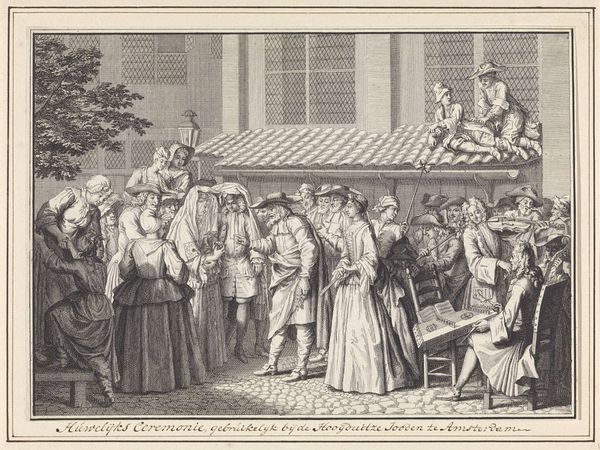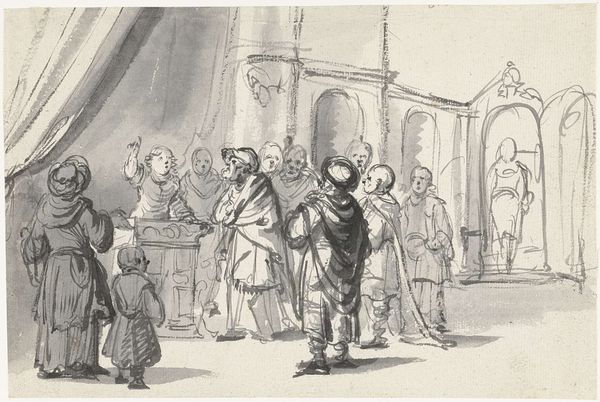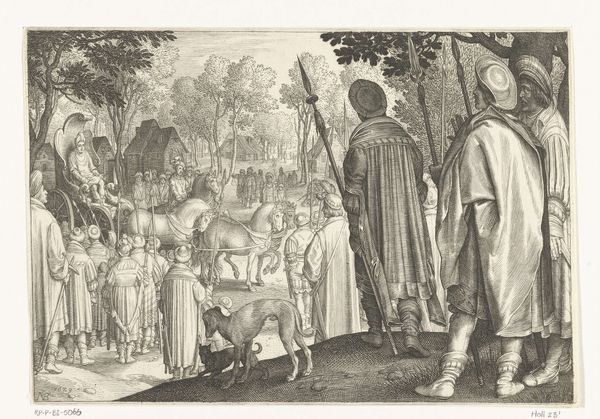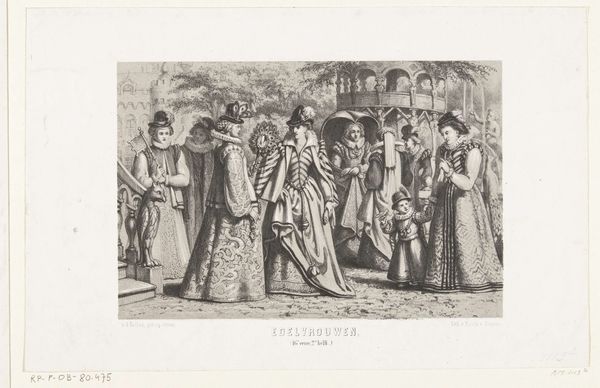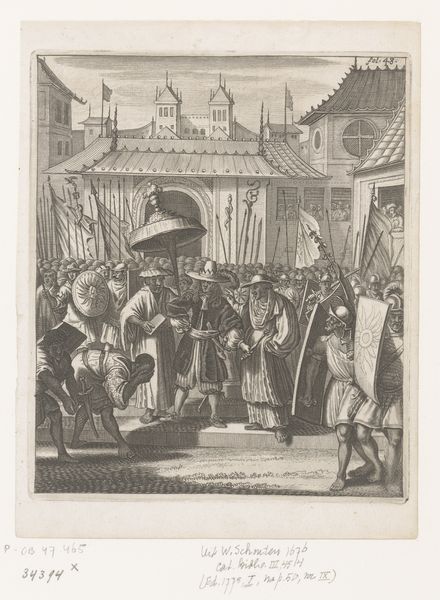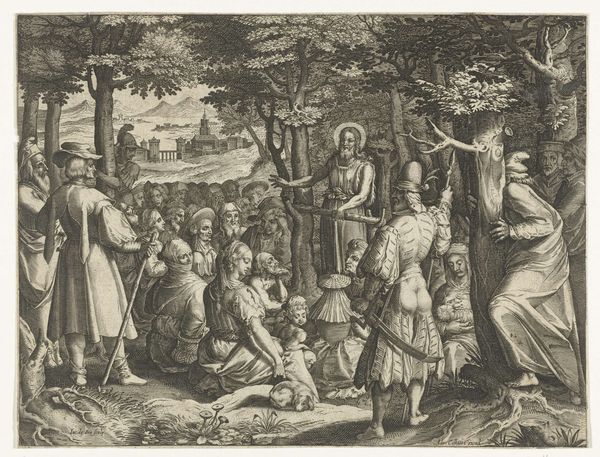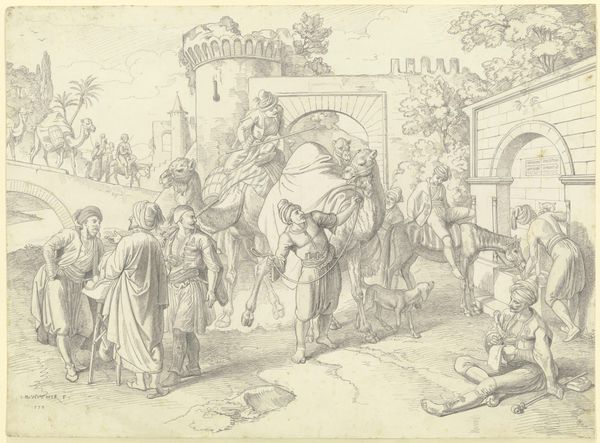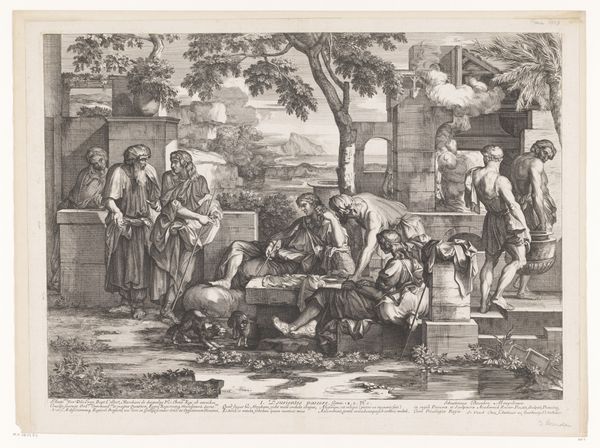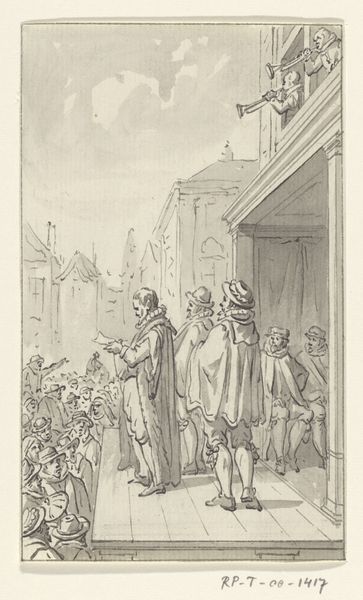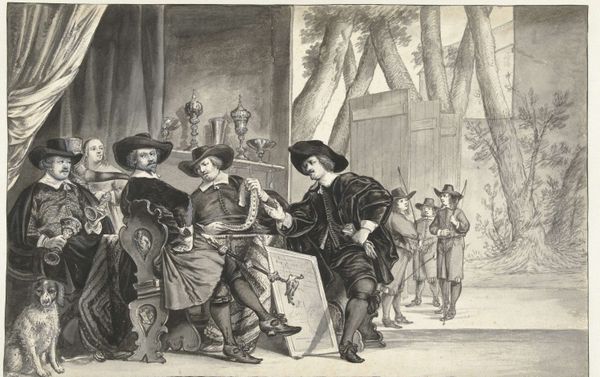
print, engraving
#
narrative-art
#
dutch-golden-age
# print
#
landscape
#
figuration
#
genre-painting
#
history-painting
#
engraving
Dimensions: height 391 mm, width 503 mm
Copyright: Rijks Museum: Open Domain
Editor: Here we have Claes Jansz. Visscher’s “Rich Children, Poor Parents” from 1609. It's an engraving. The contrast between the finely dressed family and the shabbier figures definitely catches my eye. What strikes you most about this piece? Curator: This print encapsulates early modern social tensions perfectly. Notice how Visscher contrasts the materiality of wealth—the ornate clothing, the architecture—with the older couple, hinting at a past affluence perhaps eroded by new economic realities. What can we say about the production of the image itself? Editor: Well, it being an engraving means it was likely fairly reproducible. Curator: Precisely! And what did wider access to art do during this time period? The labor needed to produce this artwork, compared to the subjects, also highlights consumption, not simply what the wealthy possessed, but the actual production of this image that could be distributed and purchased on a market, thus perpetuating such narratives to a wider audience. Editor: So, it's not just depicting wealth but participating in its cycle? The act of creating and distributing the print itself reflects the very systems it portrays? Curator: Exactly. Look closely at how the etching is so detailed on one side compared to another, indicating a production choice and maybe faster, efficient labor to have this idea seen more broadly? Does that contrast speak to you? Editor: Absolutely. Thinking about the work itself as an object within a system of production gives it a whole new dimension! It's no longer a flat depiction, but a physical participant. I appreciate how you shed light on the means of its production. Curator: Glad to expand our scope of understanding! Looking at the materiality adds further texture.
Comments
No comments
Be the first to comment and join the conversation on the ultimate creative platform.

